How to Maximize Your Great Room
It’s ‘Great’ because this is the place where everyone ends up! So, move over kitchen, the Great Room has become a favorite gathering place in the house.

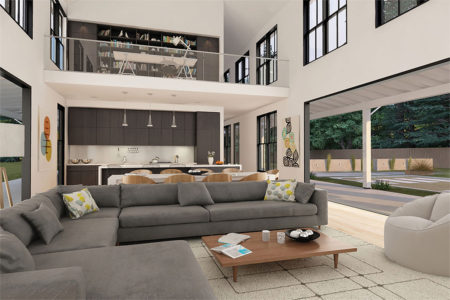 by Shelagh Duncan
by Shelagh Duncan
Whatever you call it, it’s a multi-functional room that provides space to lounge on a comfy sofa in front of the TV, find solace with a good book, watch the kids play, and enjoy good conversation.
The Great Room was a big fad beginning in the 1980s with all the new home builders back home, and was usually in addition to the basement rec-room or rumpus room. It grew as an extension to the kitchen, where Mom could keep an eye on the kids (and the soaps perhaps), while preparing family meals.
For us here, with our more casual lifestyle, it has almost completely replaced the more formal living room. Now it can encompass all of the above, plus casual dining and work and study areas.
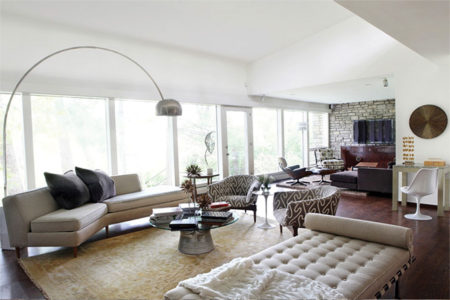 No matter what you call the room, comfort is the number one priority. There was a trend to fill the space with overstuffed sofas, but here our homes are somewhat smaller than many of our northern counterparts, and we spend much of our time outdoors. Condo-sized sofas and sectionals are more popular for smaller scaled spaces, and when paired with accent chairs offer ample seating. For those expansive, modern homes roomy modern sectionals are in demand. Comfort will always be #1, so select seating for comfort as well as for the proportions of your space.
No matter what you call the room, comfort is the number one priority. There was a trend to fill the space with overstuffed sofas, but here our homes are somewhat smaller than many of our northern counterparts, and we spend much of our time outdoors. Condo-sized sofas and sectionals are more popular for smaller scaled spaces, and when paired with accent chairs offer ample seating. For those expansive, modern homes roomy modern sectionals are in demand. Comfort will always be #1, so select seating for comfort as well as for the proportions of your space.
Great rooms come in all sizes—some larger and some smaller. They each have their own charm and also, their own challenges.
Large spaces can be tricky to decorate; the high ceilinged great rooms we see in many homes can feel overwhelming in their proportions. They can give the impression of a large, somewhat impersonal space, but the good news is that with some clever decorating tricks, you can warm up any large room and bring some ‘human scale’ into it.
Paint an accent wall—one of the easiest fixes, add some large-scale art, patterned fabric on a chair or two, or get some area rugs.
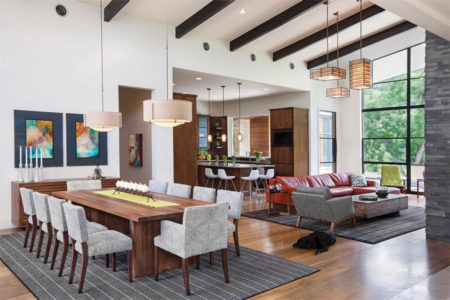 Create a cohesive feeling by grouping furniture pieces together instead of spreading them all out around the edge of the room. A couple of chairs and a side table become an instant book nook, but be sure to get some good lighting in there too for evening reading. If you only need a home theater set-up occasionally for the neighbourhood ‘Movie Night’, then keep the TV seating convenient enough for your own family use, and add some conversation-area seating with chairs that are easy to pull into ‘Movie Night’ service when needed.
Create a cohesive feeling by grouping furniture pieces together instead of spreading them all out around the edge of the room. A couple of chairs and a side table become an instant book nook, but be sure to get some good lighting in there too for evening reading. If you only need a home theater set-up occasionally for the neighbourhood ‘Movie Night’, then keep the TV seating convenient enough for your own family use, and add some conversation-area seating with chairs that are easy to pull into ‘Movie Night’ service when needed.
You may have enough kitchen counter seating, and even a separate dining room, but adding a casual dining area will help fill the space and that table will be the hub for entertaining as it will hold the pot-luck fare or the buffet.
Remember when you are furnishing this room, that it can easily become a magnet for clutter—scattered toys from kids, and from the Big Kids! Try to have designated areas for things, and set up a drop-zone close to the main door. It’s a great idea to keep keys, phones and other frequently used items together. They will always be handy just as you leave, and convenient for dropping off as you arrive.
You will find closed storage very useful for those less-used items. Consider coffee and end tables with drawers or a lower shelf, and perhaps an accent cabinet with doors. These items can be both decorative and practical.
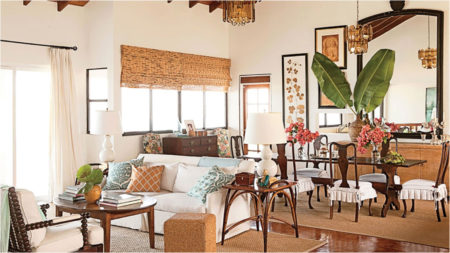 We talked about seating comfort, but what about eye comfort? Typically TV viewing is one of main functions of this room, and the viewing distance and height of the TV are often neglected factors when we set up this space. There are industry standards, but personal preferences also come into play.
We talked about seating comfort, but what about eye comfort? Typically TV viewing is one of main functions of this room, and the viewing distance and height of the TV are often neglected factors when we set up this space. There are industry standards, but personal preferences also come into play.
An easy rule of thumb to reduce eye strain is to position the lower edge of the screen no higher than the seated viewers eye-level, and for positioning your seating, you can multiply your diagonal screen width by 2.5 to get an idea of the optimal viewing distance from the TV.
There’s no need to be overwhelmed by a large room. Just remember that a large space is nothing more than a collection of smaller spaces. The more you break it up, the easier it comes together.
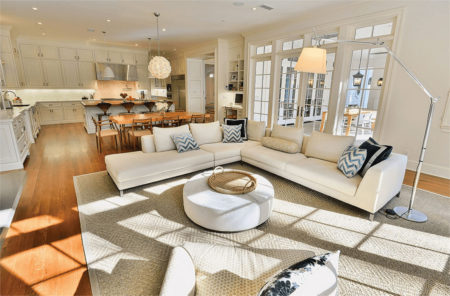 In smaller spaces there are different issues to deal with, but once you have your focal point any room will follow its function, so ask yourself what happens there? How do you use it for entertaining and for daily living? Storage will probably be one of the biggest issues along with TV placement. Remember that any room not only has floor space—it has walls.
In smaller spaces there are different issues to deal with, but once you have your focal point any room will follow its function, so ask yourself what happens there? How do you use it for entertaining and for daily living? Storage will probably be one of the biggest issues along with TV placement. Remember that any room not only has floor space—it has walls.
Use that vertical space for tall cabinets, shelves and wall hooks. Use the corners wisely and choose dual-purpose furniture like a storage-trunk coffee table, or a sofa-bed. If you have window coverings, ensure that they are pulled back, or positioned in such a way as to expose as much of the window as possible. That visually expands the space and allows the maximum amount of light to enter.
Whether your style is modern minimalist, contemporary or leans more to the ‘Tommy Bahama’ vibe, enjoy your Great Room.
Until next time…
Shelagh
Royal Palm Interiors – Uvita – 2743-8323
royalpalminteriors.com
Like us on facebook.com/RoyalPalmInteriors

